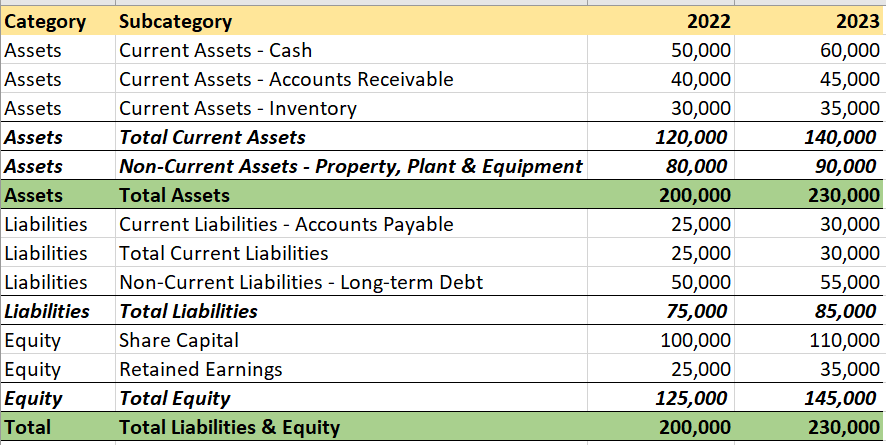A comparative balance sheet is a financial statement that presents the financial position of a company at two or more different points in time. It allows for easy comparison and analysis of changes in assets, liabilities, and equity over a specific period. By presenting financial data side-by-side, it enables stakeholders to evaluate the company’s performance, financial health, and growth over time.
Importance of comparative balance sheet:
- Performance evaluation: It helps stakeholders evaluate the company’s financial performance by comparing the changes in assets, liabilities, and equity over a given period.
- Trend analysis: By comparing data over multiple periods, stakeholders can identify trends, patterns, and areas of improvement.
- Decision-making: A comparative balance sheet aids management in making informed decisions related to investments, expansions, or cost-cutting measures.
- Benchmarking: It allows companies to compare their financial position and performance with industry peers and competitors.
- Compliance: It helps ensure that the company is meeting its regulatory and financial reporting requirements.
Types of comparative balance sheet:
- Horizontal analysis: This involves comparing financial data of the company over multiple periods to identify trends and changes in financial position.
- Vertical analysis: This involves comparing each item on the balance sheet to a specific base figure (e.g., total assets) to determine the proportionate contribution of each item.
Issues and limitations of comparative balance sheet:
- Inflation: Changes in the value of money due to inflation can distort the comparison of financial data across different periods.
- Accounting policies: Differences in accounting policies or changes in accounting standards may affect the comparability of financial statements.
- Seasonality: Some businesses are affected by seasonality, which can cause fluctuations in their financial position and make it challenging to compare balance sheets across periods.
- Industry-specific factors: Certain industries may have unique characteristics that make it difficult to compare balance sheets directly.
- Limited scope: Comparative balance sheets only provide a snapshot of a company’s financial position at specific points in time, and may not capture the complete picture of its financial health.
Example of comparative balance sheet (in table format):

All Balance Sheet Related Topics to Explore:
- Balance Sheet – What is a Balance Sheet?
- Balance Sheet Accounts
- Balance Sheet Example
- Classified Balance Sheet
- Balance Sheet Template
- Income Statement Vs Balance Sheet
- Balance Sheet Equation
- Balance Sheet Formula
- Balance Sheet Format
- How to Read Balance Sheet?
- Personal Balance Sheet
- Common Size Balance Sheet
- Trial Balance Sheet
Return from Comparative Balance Sheet to AccountingCorner.org